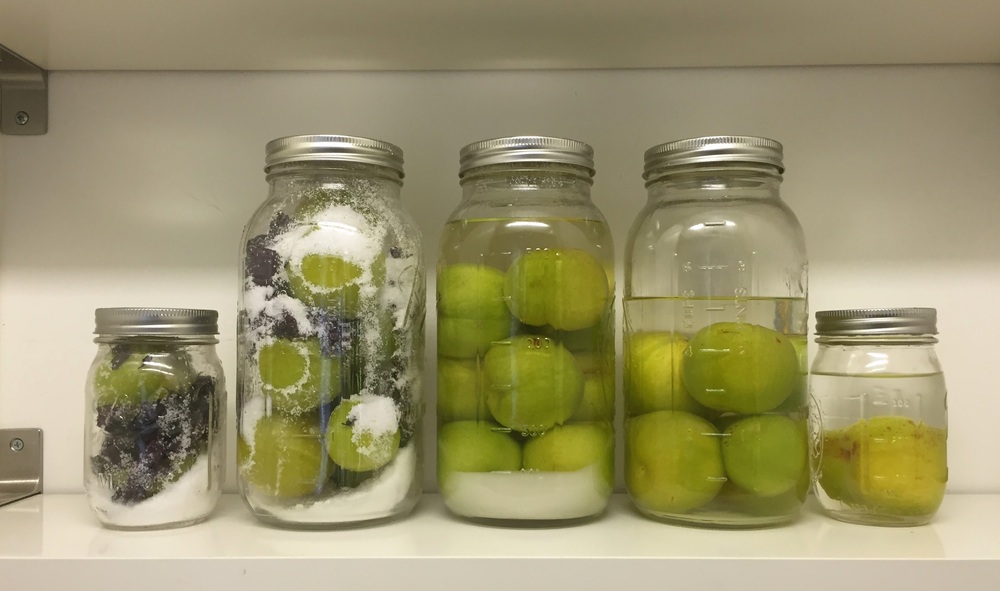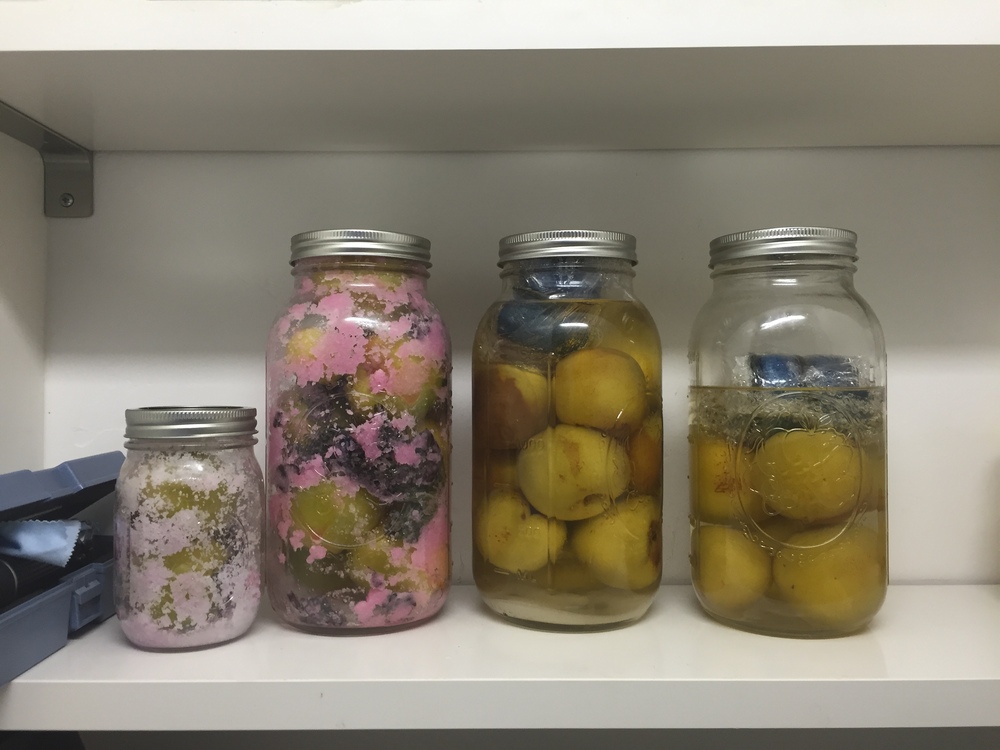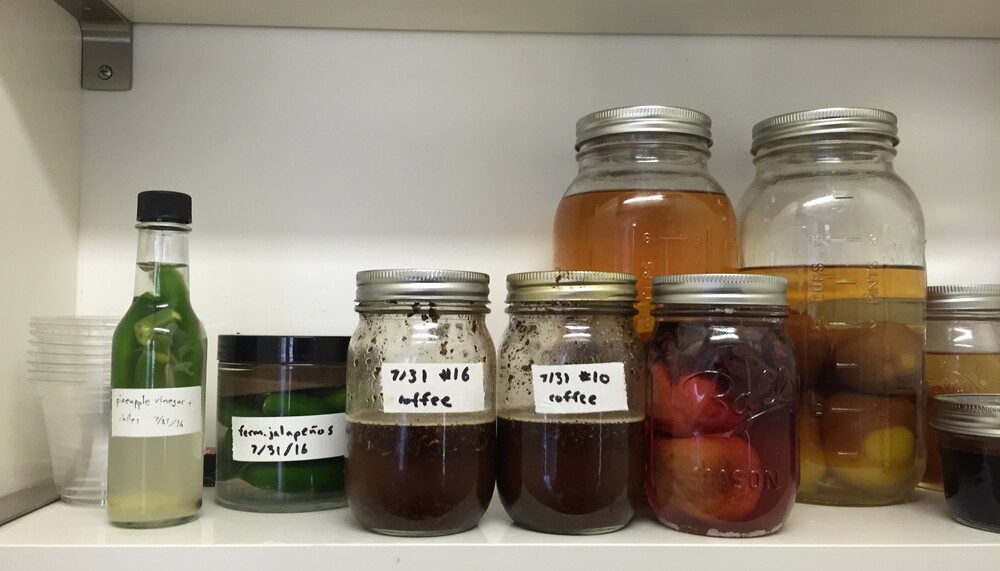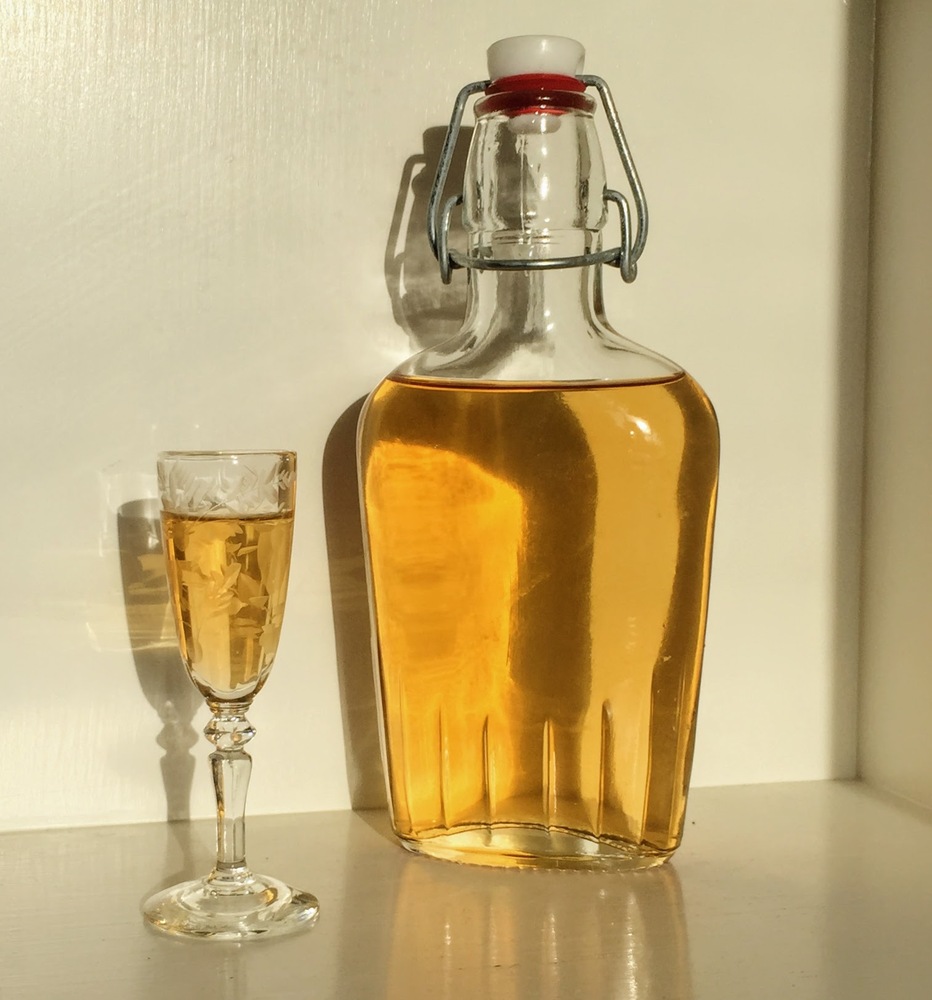This one’s a success– a slightly sweet, tart, fragrant liqueur made from unripe green pluots (in the vein of umeshu) that stimulates the taste buds. Good on the rocks or mixed with a bit of soda water:

This wasn’t where I’d started– instead, this summer I was thinking about how I loved the flavor of Japanese pickled plums* ( umeboshi). While I didn’t have a line on green ume plums in the Bay Area, Hannah had a tree covered in green pluots in her backyard– perhaps those could be used similarly? And once I decided to pickle some pluots, why not also try to make a pluot liqueur along the lines of umeshu?
I started from a few magazine articles and blog posts, including Umamimart’s past posts about making umeboshi and umeshu, but unfortunately, the salted pluots didn’t turn out well (too salty, not enough flavor– the much-larger-than-ume pluots may have drastically changed how the salt worked its way into the fruit)… while the umeshu side project was a surprise hit.
Starting off, the right three jars combine green pluots, sugar, and vodka, trying out ratios of 50% of the pluot weight in sugar, 25%, and 10% (50% is more traditional, but I like things on the less sweet side).

After just a few days– the pluots were changing color, and to my surprise, appearing to naturally ferment (based on the smell and the bubbling), even when submerged in alcohol. (The left jars are the less successful pluot umeboshi with red shiso leaf.)

A month or two later, the liquid around the pluots continued to deepen in color, though the vodka taste was still a bit harsh:

Everything I read suggested you want to wait at least 6 months (and even better, a year) for the flavors to mellow and meld. Five months later I couldn’t resist giving the 25%-sugar-ratio one a try, and all the harshness was gone– it was balanced, delicious, even a bit floral. I’ll stow away some bottles to age for the next 6-18 months, and look forward to drinking it over ice next summer when the weather turns warm again…

\* I realize that Japanese ume are not technically plums, but are a distinct fruit in the Prunus genus, along with plums and apricots